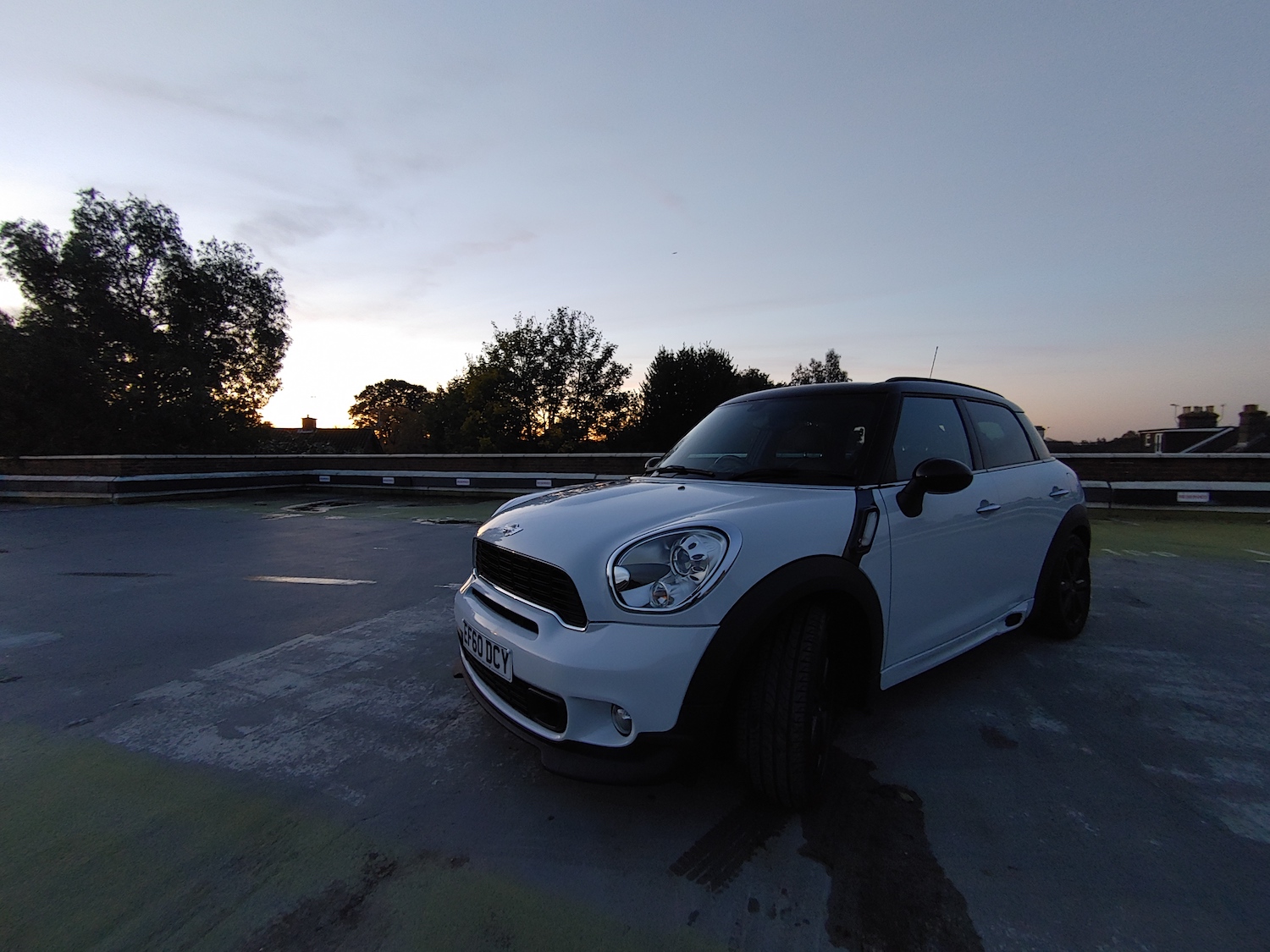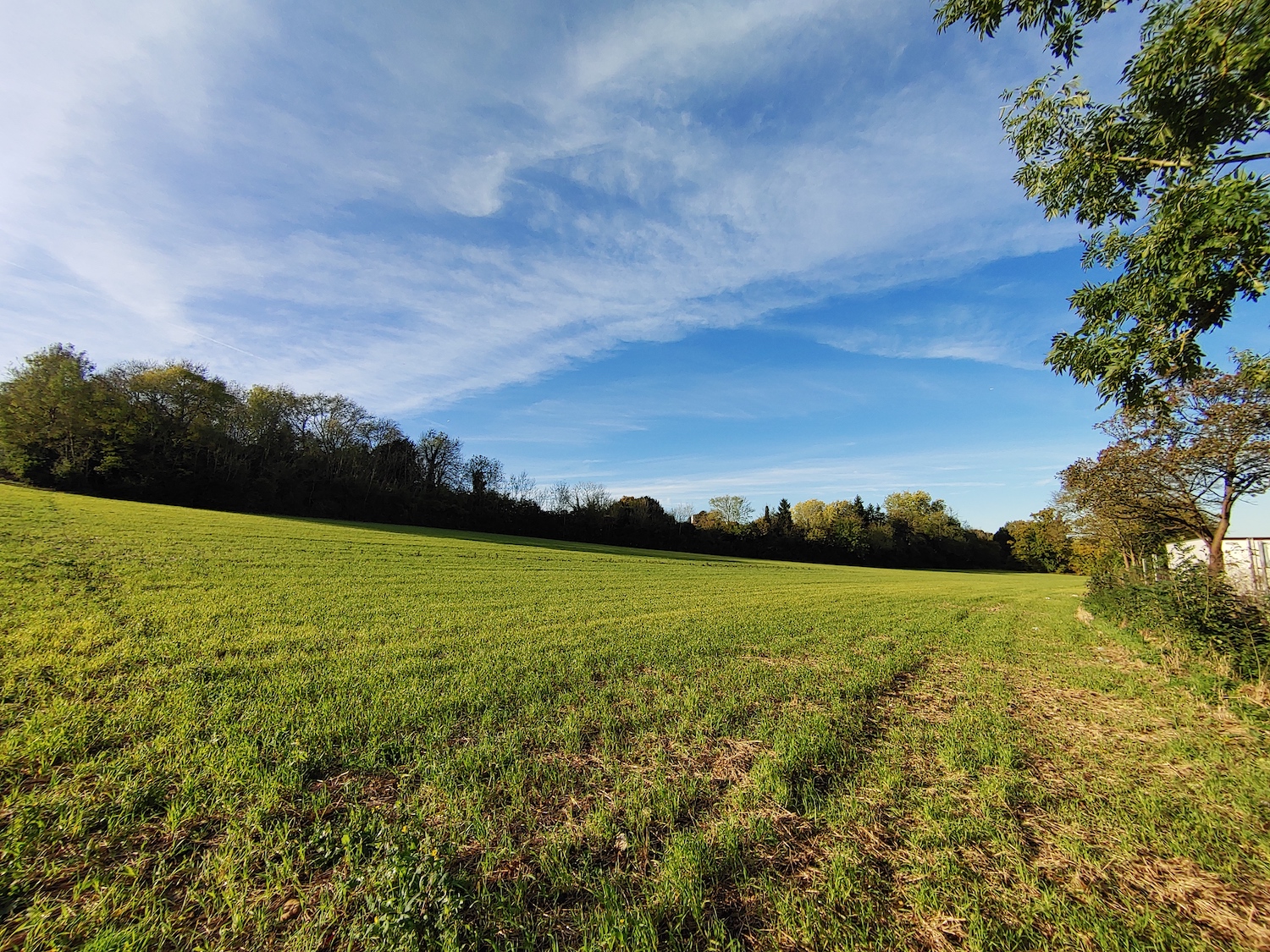
“The LG G8X ThinQ Dual Screen does help up your productivity, but its performance doesn't live up to the hype.”
- Dual Screen case is unusual
- Some genuine multi-tasking benefits
- Well-priced
- Tough, water resistant body
- Sluggish software
- No Face Unlock
- Poor fingerprint sensor
The LG G8X ThinQ Dual Screen is an oddity. Apart from the mouthful of a name, the phone comes with one of the most technically impressive cases I’ve ever seen; it houses two screens — a monochrome display on the outside for quick-glance information, and a phone-sized screen on the inside. Slot the G8X ThinQ inside, and it transforms into a dual-screen productivity powerhouse, with a design that bridges the gap between sub-standard fare like the ZTE Axon M and folding-screen smartphones like the Samsung Galaxy Fold.
The dual-screen style grabs your attention (and that of others) when you open it up like a book, but its usefulness doesn’t extend as far as I’d like, despite the addition of a gamepad mode. Worse yet, the phone itself isn’t compelling enough to use without the case.
Design and security
The LG G8X ThinQ looks and feels similar to the LG G8 ThinQ, but the changes made are extremely welcome. The notch is now a tiny teardrop rather than an iPhone-style cutout, due to the removal of sensors which enabled gesture controls on the G8 ThinQ. These gestures were fun, but entirely gimmicky, and aren’t missed on the G8X.
LG’s also moved the fingerprint scanner from the phone’s back to under the screen, a positive move in terms of design and modernity, but less so in functionality. It’s not fast and it’s not accurate. I’ve re-scanned my fingerprint several times, but it still has an unacceptable fail rate — by which I mean it fails on more than a few occasions everyday — and it definitely doesn’t read overly dry, or slightly damp fingers well at all.

The fingerprint sensor’s failings are compounded by the inexplicable lack of face unlock. A feature seemingly on every phone for years now is absent from the G8X ThinQ, forcing you to rely on the unreliable fingerprint sensor, a PIN code, or worse, just turning off security entirely. I can forgive fingerprint sensors for their idiosyncrasies when there is a usable, daily alternative that doesn’t involve me going back in time to PINs and patterns. The G8X ThinQ does not have that.
LG has made the G8X slightly thicker than some of its competitors at 8.4mm, but this has enabled it to fit the camera array flush into the body, and add plenty of toughness, as well; the phone reaches MIL-STD810G specifications and has an IP68 water resistance rating. This means it’ll withstand minor drops and encounters with dust or water better than some phones, but it’s glass on both sides, so a case is still always a good idea. The phone’s body is slippery, and more than once it has slid off a table and fell a couple of feet onto a hardwood floor, but didn’t take any damage.
It comes in one color, aurora black, which produces a lovely blue tint when it reflects light. The 192-gram phone isn’t particularly heavy, but the thickness can make it fatiguing to grip over a long period of time. The case is 134 grams, so when added to the phone, you’ve got a 326 gram device that’s 15mm thick to carry around. Samsung’s Galaxy Fold is 276 grams, and 17mm thick at its widest point.
Out of the Dual Screen case, the LG G8X ThinQ looks rather generic, without much to make you say, “wow.” Audiophiles will be pleased with the 3.5mm headphone jack, though.
Dual Screen case
The Dual Screen case makes the G8X different from almost every other phone you could own, and LG’s love of quirkiness runs all the way through it.
Slot the G8X ThinQ into the case and it connects to the second screen via a USB Type-C connection drawing power from the phone. It’s surprisingly easy to place and remove, unlike the challenge of prying some phones out of their case’s vice-like grip.

The case’s second screen is identical to the G8X’s 6.4-inch OLED FullVision screen, right down to an imitation notch and 2,340 x 1,080 pixel resolution. Side-by-side they look great — a design cohesiveness missing from LG’s first attempt at a dual-screen phone, the V50 ThinQ. The touch responsiveness is just as good; there’s no obvious difference between using an app on one screen over the other. It all feels natural.
On the left side of the case are plastic volume buttons while on the right the phone’s power key is exposed for you to use. The former’s placement leaves the volume buttons underneath the second screen when folded out, a rather awkward position to press. The hinge rotates freely around the body, so the screen can be folded against the back of the phone, viewed alongside it, or positioned as a tent-like stand. It has a nice bit of resistance to it and is free of creaks or groans moving through the range of motion. It feels like a part of the phone, rather than a separate case.
On the outside is a secondary 2.1-inch monochrome screen which shows time, date, and notification icons. It’s not interactive or dynamic, so unlike second screens on LG phones like the V10, notifications and alerts don’t scroll across it. You can charge the G8X ThinQ while in the case, but you have to use the included magnetic dongle for the case’s proprietary power connection (or use a wireless charger). Otherwise, you have to remove the phone to charge it up, as the case has no battery and is powered fully by the phone.
Using the Dual Screen case
LG has put thought and effort into making the Dual Screen case interesting, helpful, and fun to use. Turn the phone to landscape and you can select Wide View in the Chrome browser to scroll content over both screens, with the software ignoring the physical split between them. The gap is still slightly distracting, but it works well here. Unfortunately, this never operated correctly outside of Chrome, even though it’s supposed to work in Instagram and YouTube. You can swap to the pre-loaded Whale browser app for a more integrated experience but I, along with many other people, will want to use Chrome.

This sets the tone for other features of the Dual Screen — useful, but with restrictions. The LG Gamepad feature puts a gamepad on the lower screen and displays your game in the top screen, similar to a Nintendo 3DS or the Twin View Dock 2 for the Asus ROG Phone 2. I love the alternate skins for the Gamepad (a little steering wheel for driving games, for example) but for it to work, the game must support a gamepad accessory, and not all do. Asphalt 9: Legends was great fun to play in this mode, but I was sad to see side-scrolling shooter R-Type didn’t work.
Using apps alongside each other in portrait works as intended. It’s here that the productivity enhancements show up, as I could conduct a conversation through Slack on one side, and reply to email on the other. While I found this useful, it’s a relatively niche case, if you’ll forgive the pun. It is a little sluggish, though, especially opening folders with apps inside.
The Dual Screen case has its own little menu for controlling what’s shown which you can open using a shortcut at the side of the screen or by a three-finger swipe to swap content from one screen to the other. It’s not always consistent though, as to enable the second screen as a viewfinder in the camera, there is yet another button in the top left of the screen. It’s easy to miss features like this.
While the functionality is mostly enjoyable, the weight and bulkiness is a serious consideration. With the Dual Screen case attached, this is a big, thick, heavy phone. It doesn’t fit in my pockets well; it’s awkward and tiring to use with one hand; and when I’m not using the dual-screen features, it ends up being a massive, unwieldy folio case I must open and close. It’s easy to take off and put in a bag or keep at home, but that defeats the purpose, and the G8X ThinQ on its own simply isn’t interesting.
Camera
Only two lenses live on the back of the G8X — a configuration that’s quickly aging and disappearing from the market. This consists of a 12-megapixel, f/1.8 aperture main lens with optical image stabilization, and a 13-megapixel f/2.4 super wide angle lens. On the front is a 32-megapixel, f/1.9 aperture selfie camera.

The photos it takes are decent, but not outstanding. It captures bright skies beautifully, and snaps a great sunset, but struggles in difficult lighting conditions when using the wide-angle lens, and again in low light too. You end up feeling the camera may not take the photo you want, and therefore you might not bother with it. It’s a shame, and makes the camera feel like an afterthought.
LG pioneered the use of wide-angle lenses on smartphones, but has not kept up with the telephoto trend, so the G8X misses out on some of the creative fun to be had and sharper, 2X optical zoom found on phones like the OnePlus 7T. However, there are plenty of other camera features to enjoy like manual mode for photo and video, flash jump-cut to create gifs, and studio-lighting modes.
There’s also an extremely unusual ASMR mode. Autonomous sensory median response (ASMR) is a trendy craze where YouTubers stroke, break, and set things on fire for your auditory pleasure. On the G8X ThinQ, the high sensitivity microphone is supposed to enable you to join these ranks without the need for additional equipment. I’ll certainly be testing this feature in more detail and will update the review with further impressions.
The Dual Screen case can be a nifty camera accessory. The second screen can act as a viewfinder to make capturing certain angles better, and you can use it to stand the phone up and shoot selfies or time-lapse video, which the G8X can do in 4K resolution. The results look great, too. There’s a Steady Cam feature which reduces blurring when moving quickly, plus AI Action Shot which automatically sets the shutter speed and focuses on fast moving subjects.
Excellent audio experience, sluggish performance
One reason I and many others love LG smartphones is the audio experience, which is second-to-none. No other phone, not even the brilliant-sounding iPhone can keep up. Plug a pair of good headphones into the G8X’s 3.5mm jack, and prepare to be astonished. You simply don’t get music on a mobile device like this outside of a good dedicated player. With the hi-res file support and a fabulous Hi-Fi Quad DAC, the G8X ThinQ sounds sublime.

Given the silicon inside — a Snapdragon 855 processor with 6GB of RAM — it’s frustrating the software is sluggish, as there is ample power inside the G8X ThinQ waiting to be shown. The benchmarks tell the same story.
- AnTuTu 3DBench: 416,492
- Geekbench 5 CPU: 743 single-core; 2,718 multi-core
- 3DMark Sling Shot Extreme: 4,992 Vulkan
Gaming performance can’t quite keep up with the OnePlus 7T, the Asus ROG Phone 2, or the Google Pixel 4 on paper, but I never noticed any difference in real life, apart from the lack of a 90Hz refresh rate on the screen.
Battery life
A 4,000mAh battery inside sounds substantial, and provided you don’t continuously use the Dual Screen case, it will last a full day from morning until bedtime with around 25% remaining, in my experience.
However, when it runs two screens it comes under additional strain, and would be right down to single-digit percentages come night time with moderate use.
Price, warranty, and availability
The LG G8X Dual Screen is available starting November 1, and it costs $700. It will be available without a contract through Amazon as well as through AT&T and Sprint if you’d prefer to buy through a carrier. The case and phone comes as a package deal, and at this price, it’s good value.
Our Take
The Dual Screen case gives the G8X ThinQ features few phones can match, although the usefulness of these features varies widely. It’s a quirky device that stands out, mostly for its size and looks, but doesn’t nail the camera or software experience the way other phones do.
Are there any alternatives?
The LG G8X ThinQ Dual Screen represents decent value for an unusual yet productive package, but it’s not alone. The OnePlus 7T is $600 with a better camera and screen, while the iPhone 11 starts at $700 and is sleeker, has better software, and a far superior camera. The Google Pixel 4 sits somewhere in-between at $800, and apart from the battery life, is another solid purchase with excellent software and unique camera features of its own.
However, none of these have a case with a second screen, and if you want that the G8X Dual Screen sits almost alone. The V50 ThinQ Dual Screen is a first-generation product, and is not as polished as the G8X ThinQ Dual screen package. Otherwise, you’ll have to splash out nearly $2,000 on a Samsung Galaxy Fold.
How long will it last?
This phone is built to both military-grade toughness and carries an IP68 water resistance rating, so it should withstand a fair amount. Sadly, it’s already running old software with Android 9 Pie and LG has not stated when Android 10 will arrive. Otherwise, the specifications are strong enough to last for at least the duration of a two-year contract.
Should you buy one?
Yes, but only if you can already imagine yourself making good use of the Dual Screen case. This is what makes the G8X ThinQ interesting, and although the phone itself has decent performance and welcome toughness, the biometrics are lacking, and the design is too generic to entice you.
Editors' Recommendations
- The best LG phones for 2022
- 4 things you can do with Surface Duo that you can’t on other smartphones
- Best tech of IFA 2019: From OLED TVs to lightning-fast laptops
- Wave your hands if you want the powerful, yet more affordable LG G8S ThinQ









